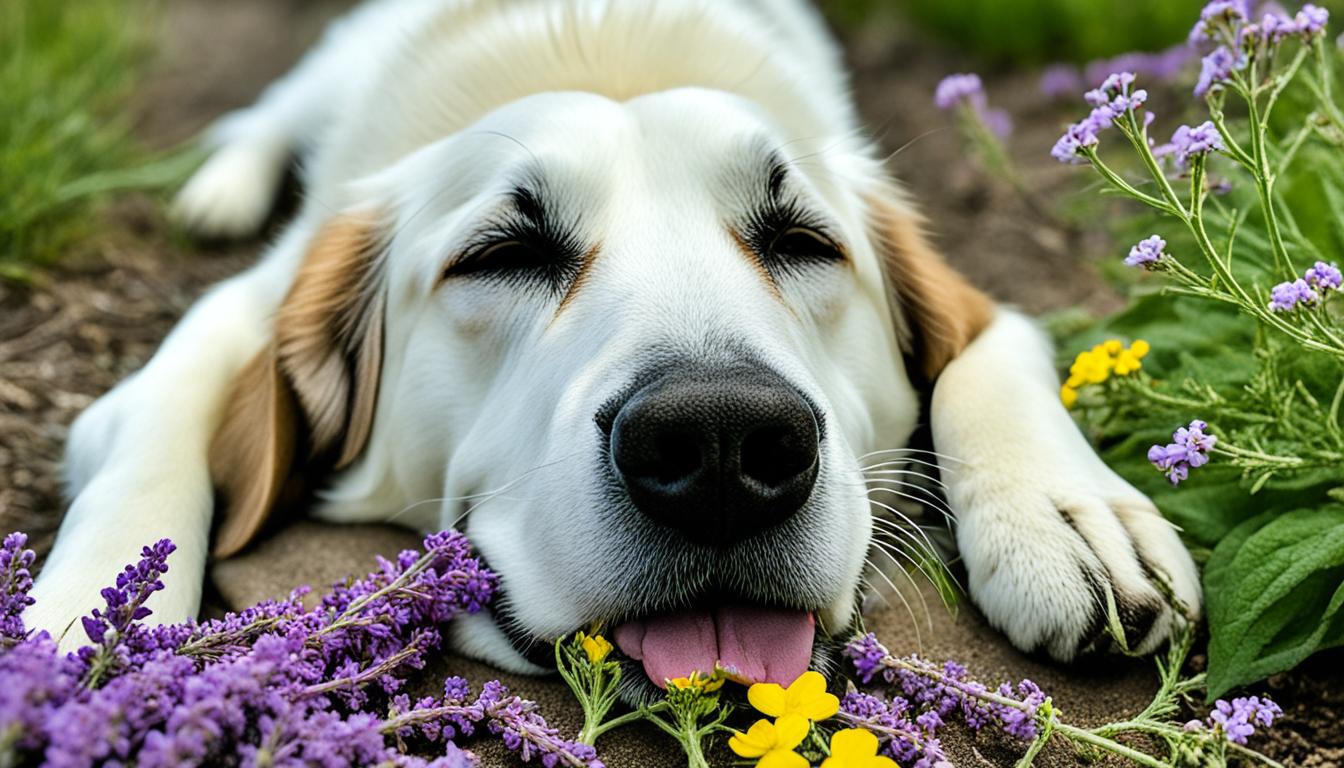Positive Reinforcement Training Basics
When it comes to training our furry friends, positive reinforcement has emerged as a highly effective and humane approach. This method of dog training focuses on rewarding desirable behaviors using treats, praise, toys, and clickers while avoiding force or punishment. By relying on classical and operant conditioning principles, positive reinforcement training creates a positive learning environment where dogs associate their actions with positive outcomes (Good Dog Academy).
Definition of Positive Reinforcement
Positive reinforcement is a training technique that involves rewarding a dog’s desirable behavior to encourage its repetition. It reinforces the idea that when a dog performs a certain action or follows a command correctly, it will receive a reward. These rewards can include treats, verbal praise, petting, playtime, or any other form of positive stimulus that the dog finds motivating. By consistently associating rewards with desired behaviors, positive reinforcement training helps dogs understand what is expected of them and encourages them to repeat those behaviors in the future.
Importance of Positive Reinforcement
Positive reinforcement training offers numerous advantages when it comes to training dogs. Firstly, it helps in building trust and strengthening the bond between pet parents and their furry companions. By using rewards and positive reinforcement, dogs associate their owners with positive experiences and are more likely to respond to commands willingly and enthusiastically.
Another key benefit of positive reinforcement training is its ability to promote positive behaviors. By rewarding and reinforcing desired actions, such as sitting, staying, or coming when called, dogs learn to understand what is expected of them and are motivated to repeat those actions. This method focuses on teaching dogs what they should do, rather than punishing them for what they shouldn’t do.
Furthermore, positive reinforcement enhances the learning experience for dogs. By creating a positive and rewarding environment, dogs become more engaged and eager to participate in training sessions. This leads to quicker and more effective learning, as dogs actively seek out opportunities to earn rewards.
In summary, positive reinforcement training provides a humane and effective approach to dog training. By using rewards and positive stimuli to reinforce desirable behaviors, it builds trust, promotes positive actions, and enhances the overall learning experience for our canine companions. Stay tuned as we delve deeper into the advantages and challenges of positive reinforcement training in the upcoming sections.
Advantages of Positive Reinforcement Training
Positive reinforcement training for dogs is a highly effective and humane approach to shaping their behavior. By emphasizing rewards instead of punishment, this training method provides numerous advantages that benefit both dogs and their owners.
Building Trust and Bonds
One of the key advantages of positive reinforcement training is that it helps build trust and strengthen the bond between dogs and their guardians. By using treats, praise, toys, and clickers as rewards, dogs associate their actions with positive outcomes, creating a positive learning environment (Good Dog Academy). This positive association enhances the trust dogs have in their owners, as they understand that good behavior leads to rewards and affection.
Promoting Positive Behaviors
Positive reinforcement training focuses on encouraging dogs to repeat desirable behaviors. Instead of punishing unwanted behaviors, this method reinforces and rewards the behaviors that we want to see more of. By rewarding desired actions, dogs learn to associate those behaviors with positive outcomes, making them more likely to exhibit those behaviors in the future.
For example, if a dog sits on command and receives a treat, they will be more inclined to sit when given the command again. This promotes obedience and reinforces the desired behavior.
Enhancing Learning Experience
Positive reinforcement training creates a positive and enjoyable learning experience for dogs. Dogs are motivated to learn and participate in training sessions because they associate them with rewards and positive interactions with their owners (Good Dog Academy). This approach makes the training process more engaging and effective, as dogs actively seek to learn and please their owners.
By utilizing treats, praise, toys, and clickers, positive reinforcement training captures the dog’s attention and encourages their active participation in the learning process. This leads to quicker and more effective learning outcomes, making training sessions enjoyable for both dogs and their owners.
Overall, the advantages of positive reinforcement training for dogs are vast. It builds trust and strengthens the bond between dogs and their owners, promotes positive behaviors, and enhances the learning experience. By utilizing this method, pet owners can cultivate a positive and harmonious relationship with their furry companions, while helping dogs develop the desired behaviors and skills.
Challenges of Positive Reinforcement
While positive reinforcement training for dogs has numerous benefits, it is important to be aware of potential challenges that may arise during the training process. However, with the right techniques and strategies, these challenges can be overcome, allowing for successful training and behavior modification.
Potential Training Hurdles
-
Time and Patience: Positive reinforcement training may require more time and patience compared to other training methods. The desired results may take time to manifest, as dogs learn at their own pace. Consistency and perseverance are key to achieving long-term success (Quora).
-
Distractions: Dogs may get easily distracted during training sessions, especially in new or stimulating environments. It can be challenging to maintain their focus and keep them engaged. Gradually increasing the level of distractions and using high-value rewards can help overcome this hurdle.
-
Unwanted Behaviors: While positive reinforcement training focuses on rewarding good behavior, dogs may exhibit unwanted behaviors that need to be addressed. It’s important not to accidentally reinforce these behaviors by providing rewards or attention when they occur. Consistency and clear communication are crucial in shaping desired behaviors and redirecting unwanted ones (Humane Society).
Strategies for Overcoming Challenges
-
Training Techniques: Employing effective training techniques specific to positive reinforcement can help overcome challenges. Techniques such as clicker training, marker training, and shaping behavior are valuable tools in reinforcing desired behaviors and teaching new commands.
-
Consistency and Repetition: Consistency is vital in positive reinforcement training. Establishing a regular training schedule and using consistent cues helps dogs understand expectations and reinforces the learned behaviors. Repetition allows for the reinforcement of desired behaviors until they become habitual.
-
Rewards and Reinforcements: Selecting appropriate rewards that are highly motivating for your dog is crucial. It could be treats, praise, or playtime, depending on what your dog finds most rewarding. Experimenting with different types of rewards can help maintain your dog’s interest and enthusiasm during training sessions.
-
Professional Guidance: Seeking guidance from professional dog trainers or attending dog training classes can provide valuable insights and assistance in overcoming challenges. Professional trainers can offer personalized advice based on your dog’s unique needs and behaviors.
By being aware of the potential training hurdles and implementing effective strategies, positive reinforcement training can be a rewarding and successful experience for both you and your dog. With patience, consistency, and the right techniques, you can overcome challenges and strengthen the bond with your furry companion while promoting positive behaviors and a harmonious relationship.
Techniques in Positive Reinforcement
Positive reinforcement training for dogs utilizes various techniques to reinforce desired behaviors and encourage learning. Three effective techniques commonly used in positive reinforcement training are clicker training, marker training, and shaping behavior.
Clicker Training
Clicker training is a popular method that can enhance the effectiveness of positive reinforcement training for dogs. This technique involves using a clicker, a small handheld device that makes a distinct clicking sound, to mark the exact moment the desired behavior is completed before delivering a treat. The sound of the clicker serves as a clear and consistent signal to the dog that they have performed the desired behavior correctly. Clicker training helps in creating a strong association between the behavior and the reward, making it easier for the dog to understand and replicate the behavior in the future. To learn more about clicker training, consider our article on clicker training for dogs.
Marker Training
Marker training is another effective technique used in positive reinforcement training for dogs. This method involves using a verbal or physical marker, such as the word “yes” or a specific hand signal, to indicate to the dog that they have performed the desired behavior correctly. The marker serves as an immediate feedback signal, letting the dog know that they will receive a reward for their action. Marker training helps in creating a positive association between the marker, the behavior, and the reward, making it easier for the dog to understand and respond to commands. For more information on marker training, check out our article on dog training techniques.
Shaping Behavior
Shaping behavior is a technique used in positive reinforcement training to teach dogs complex behaviors by breaking them down into small, manageable steps. With shaping, the trainer reinforces successive approximations of the desired behavior, gradually requiring more from the dog before they receive a treat. For example, when teaching a dog to “shake,” the trainer would initially reward the dog for lifting a paw, then progress to rewarding the dog for touching their hand, and eventually for the full behavior of shaking hands (Humane Society). Shaping behavior allows dogs to learn and understand new actions through incremental progressions, making the training process more effective and enjoyable for both the dog and the trainer.
By utilizing techniques such as clicker training, marker training, and shaping behavior, pet owners can effectively reinforce positive behaviors in their dogs. These techniques enhance communication, accelerate learning, and strengthen the bond between dogs and their owners. When combined with other best practices in positive reinforcement training, these techniques contribute to the overall success and effectiveness of training sessions.
Best Practices in Positive Reinforcement
When it comes to positive reinforcement training for dogs, there are several best practices that can help ensure effective and successful training. Consistency in training, reward selection, and clear communication and feedback are key elements to consider.
Consistency in Training
Consistency is crucial in positive reinforcement training. It is important for everyone in the family to use the same cues and commands to avoid confusing the dog. Dogs thrive on routine and predictability, so maintaining consistency helps them understand what is expected of them. Verbal cues should be short, uncomplicated, and consistently used to reinforce desired behaviors (Humane Society). By providing clear and consistent signals, you can help your dog understand what behaviors are being reinforced.
Reward Selection
Rewards play a vital role in positive reinforcement training. The reward serves as motivation for the dog to repeat the desired behavior. When selecting rewards, it’s important to use something that your dog finds highly rewarding. This can include edible treats, verbal praise, physical touch, or toys. It is recommended to use small, low-calorie treats and vary the types of rewards to keep the dog engaged and motivated during training sessions (Small Door Vet). Remember to choose rewards that are appropriate for your dog’s preferences and dietary needs.
Communication and Feedback
Clear communication and timely feedback are essential components of positive reinforcement training. Dogs do not understand full sentences like humans, so it’s important to use short, direct commands. Commands such as “Sit,” “Stay,” “Down,” “Come,” and others help effectively communicate with the dog during training sessions (Small Door Vet). Use consistent hand signals or gestures alongside verbal cues to reinforce your dog’s understanding.
Providing immediate feedback is crucial in positive reinforcement training. The reward must occur immediately (within seconds) after the desired behavior to effectively reinforce it (Humane Society). This helps the dog understand which behavior is being rewarded and increases the likelihood of them repeating it in the future.
By following these best practices in positive reinforcement training, you can create a positive learning environment for your dog. Consistency, reward selection, and clear communication and feedback are key to building a strong bond with your furry companion and achieving training goals effectively. Remember to be patient, use positive reinforcement consistently, and tailor the training approach to suit your dog’s individual needs and preferences.
Impact of Positive Reinforcement
Positive reinforcement training for dogs has a profound impact on their behavior, well-being, and the overall relationship between pet parents and their furry companions. Let’s explore some of the key benefits of positive reinforcement training.
Behavioral Health Benefits
One of the primary advantages of positive reinforcement training is its positive impact on the behavioral health of dogs. By focusing on rewarding desired behaviors rather than punishing unwanted ones, this training method creates a positive association between good behavior and rewards. This approach encourages dogs to repeat the desired actions when given a command, leading to a shift in behavior (Small Door Vet).
Positive reinforcement training helps dogs become happier, more relaxed, and confident. It can also reduce fear, anxiety, and stress levels, improving their overall well-being. By using rewards such as treats, praise, or playtime, pet parents can motivate their dogs to engage in positive behaviors and discourage unwanted ones.
Strengthening Pet-Parent Relationships
Positive reinforcement training establishes a strong bond between dogs and their pet parents. This training method emphasizes trust, kindness, patience, understanding, and forgiveness towards dogs. It involves setting rules based on their behavior, being patient with their learning process, and exposing them to various experiences to reduce fear and anxiety (Quora).
By using positive reinforcement techniques, pet parents can effectively communicate with their dogs and build a foundation of trust. Dogs feel more secure and connected to their owners, which contributes to a healthy and fulfilling relationship. This training method promotes mutual understanding, cooperation, and a sense of teamwork between dogs and their pet parents.
Creating a Positive Environment
Positive reinforcement training creates a positive environment for both dogs and their pet parents. By focusing on rewarding good behavior, this method encourages a harmonious living space. Unwanted behaviors often diminish when something else is rewarded, leading to a shift in behavior.
A positive training environment nurtures a sense of happiness and enjoyment for both the dog and the handler. Dogs become eager learners, as the training process becomes fun, engaging, and mentally stimulating. This positive atmosphere fosters a stronger bond between pet parents and their dogs, creating a loving and supportive home environment.
By embracing positive reinforcement training for dogs, pet parents can promote their pet’s behavioral health, strengthen their relationship, and cultivate an overall positive living environment. The benefits extend beyond training sessions, enhancing the well-being and happiness of both dogs and their human companions.






